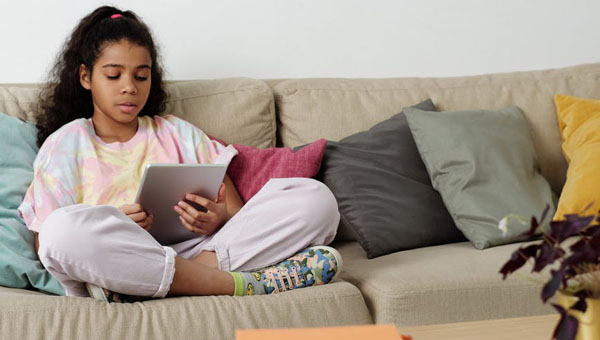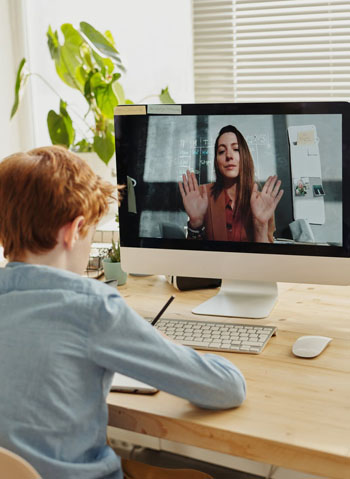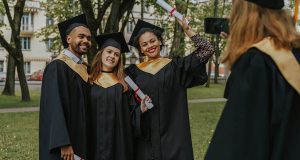By Yvonne Sam
Contributing Columnist
 It is now apparent that all aspects of our daily lives have been, and are being, impacted by the COVID-19 pandemic ravaging the world. And education is also feeling the change.
It is now apparent that all aspects of our daily lives have been, and are being, impacted by the COVID-19 pandemic ravaging the world. And education is also feeling the change.
Students, parents and teachers are responding to the new normal. In response to the sequestration from group activities, out of concern for the COVID-9 pandemic, the new learning environment is remote learning, in a virtual classroom, usually the homes of the students.
Such a shift however, is not without its accompanying lessons to be learnt. For parents, it is proving, beyond a shadow of a doubt, to be an eye-opening experience, as to what teachers have to deal with, on a daily basis, during the school year — a definite benefit for teacher appreciation.
Teachers also have to re-examine how they are instructing, and, in the process, also re-design some of the lesson plans, to accommodate the absence of one-on-one contact, such as is present in the standard classroom.
After all, teaching is a lot more than just providing instruction; it also involves understanding the learning abilities of the student, which can only be done, through observation that takes place in the classroom. Since teachers are lacking that contact, they are having to develop new methods for tracking the success of their students.
Students also require an adjustment. With the exception of the very earliest grades — kindergarten, first and second grades — students have been trained to learn in the standard classroom.
For most students the environment, which is their home, is radically different from their normal classroom, and requires greater focus and more discipline for the student to retain the information. The classroom is the real, tangible, touchable place to teach and also to learn.
It is the place, where teachers engage students, encourage participation and interaction from the entire class, and enlarge on the thoughts and ideas, raised by students. None of these interactions can be duplicated in a virtual classroom.
Additionally, the “new normal” is also providing new challenges and new opportunities that would not be immediately apparent, for months to come. Another major challenge, and one also to be seriously considered, is the absence of anecdotal information about the success of on-line instruction.
Wherefore all students being in their final cycle of the current school year, there is virtually little to no chance to identify any educational deficiencies, before they move up the educational path. This potential failure needs to be addressed now, with plans for remediation, if required.
The current pandemic has forced the use of computers in education, in ways that were only imagined, but now are happening, on a daily basis. The opportunities that will result from this new educational effort, since it is universal, is to examine the results in a standardized format.
Presently, all schools, nationwide, are closed, providing the ability to track the success of students across the country. By doing so, the education community has a standardized baseline to compare to the former environment, and through this experience, refine digital educational material and instruction.
When television first appeared, it was hailed as a new educational frontier, an argument that has since been disproven. Numerous mini-crises have been identified, because of the reliance on this still rudimentary technology.
Also lacking is adequate access to both the equipment and internet services, missing or non-existent in some areas and some homes. The current experience is revealing these, and other shortages, that can be reasonably addressed, in the near term.
Even if a teacher wants to be a virtual or classroom teacher, the foundation for such, will always be entrenched in the real classroom environment. It is an absolute essentiality for learning, to lead, guide, instruct, connect and grow as a teacher. It is the environment that makes the classroom, and this sadly, is the reason why virtual teaching will never fully replace classroom teaching.
The “new norm” may not be creating the expected storm. Wide disparities in technology access and teachers’ pre-pandemic experience with distance learning, cloud predictions for its future, demand notwithstanding.
A factor that has not received considerable attention is, the fact that teachers, like many other agencies, were also caught off-guard and, in some cases, blindsided by the pandemic. In the post-pandemic period, there will certainly, be a demand for teachers, who can effectively conduct online teaching.
In fact, one can almost proffer a guess that questions, about teachers’ experience with distance learning, will become a central part of any prospective teacher’s interview.
Aleuta — the struggle continues.
Yvonne Sam, a retired Head Nurse and Secondary School Teacher, is the Public Relations Officer of the Guyana Cultural Association of Montreal. A regular columnist for over two decades with the Montreal Community Contact, her insightful and incursive articles on topics ranging from politics, human rights and immigration, to education and parenting have also appeared in the Huffington Post, Montreal Gazette, XPressbogg and Guyanese OnLine. She is also the recipient of the Governor General of Canada Caring Canadian Citizen Award.
 Pride News Canada's Leader In African Canadian & Caribbean News, Views & Lifestyle
Pride News Canada's Leader In African Canadian & Caribbean News, Views & Lifestyle







